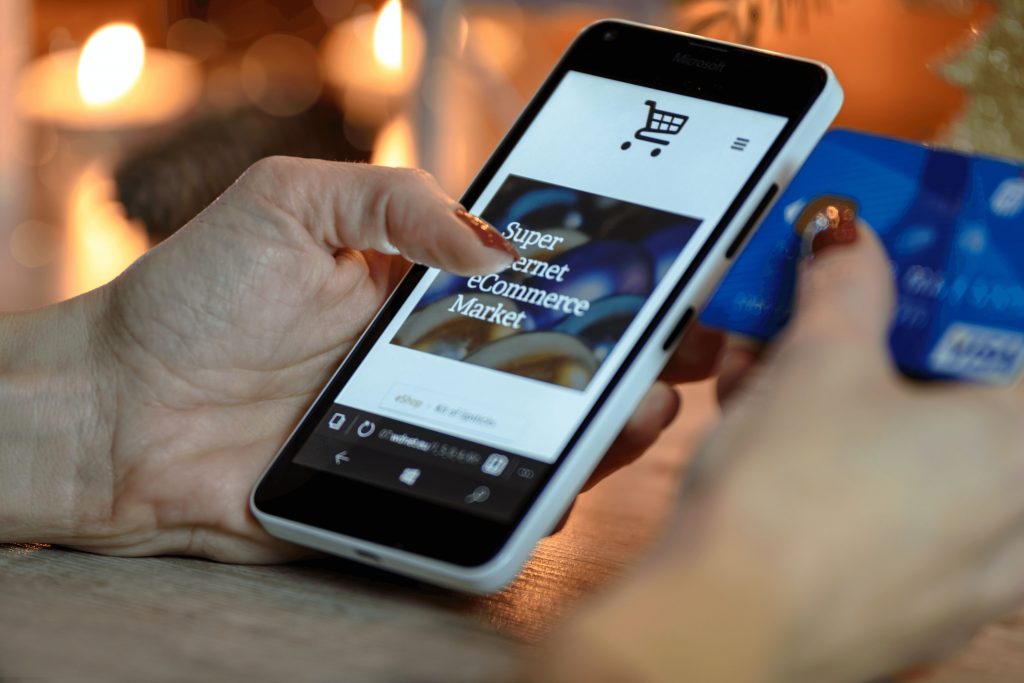Transformation of consumers into e-commerce
E-commerce is a sphere of the digital economy, including financial and trade transactions implemented using information networks. In other words, e-commerce (or e-commerce) is the activity of selling and buying goods and services on the Internet using online services and special applications.
The e-commerce market, it turns out, began to emerge in the 1960s of the last century, and the first purchase on the Internet was made only in 1994, when a recently released music album appeared as a product.

Transformation of the e-commerce audience
The growth of marketplaces not only changes the composition and shares of players in the online sales market but also seriously transforms the behavior of buyers. The transformation of the audience of buyers in the field of online commerce looks like this:
Marketplaces offer customers a convenient product search system using detailed filters, as well as selection by keywords associated with the name or description of the product from the buyer. Accustomed to convenient search, buyers want to see similar systems on all online stores and are ready to abandon the site if there is no filter system on the site or there are difficulties finding goods.
A key feature of marketplaces is the simple ability to compare several products from the same supplier or similar products from different suppliers by comparing characteristics, prices, and reviews. And all these comparisons can be made on one platform. Some marketplaces have advanced comparison systems, while others have the ability to search for products that have images similar to the photo of the product in question.
The habit of comparing and contrasting products and their parameters within one site has grown into the habit of comparing products within several sites and choosing the most advantageous product option for the order in terms of price or other parameters.
How does this happen?
Consumers associate marketplaces with convenience and quick delivery. The goods can be picked up at any of the pick-up points or received at a convenient location using courier delivery. The systems of marketplaces' own warehouses provide short delivery times (from 2 to 5 days), and many pickup points located even in the most remote corners of the country allow you to reach a very wide audience. According to the statistics of representatives of the e-commerce industry, more than 2/3 of all orders placed in online stores and marketplaces are received at the points of export, while the share of their own store delivery services in 2022 amounted to 86% of the total volume of orders.
The short delivery time and the guarantee of receiving the goods in the office of a large company provide a high level of trust and willingness not only to place an order on the marketplace but even to overpay, compared to a small, unknown online store. Fast delivery is becoming a key aspect for many buyers, and the opportunity itself is a real competitive advantage for both marketplaces and online stores.
The importance of reviews in e-commerce
Marketplaces in most cases provide the buyer with the opportunity to get acquainted with the product, open the packaging, inspect the product, and even try on clothes, shoes, and accessories until the moment of payment. In fact, marketplaces have turned into such remote stores, featuring a wide assortment. In this regard, buyers are no longer ready to pay for the "pig in a poke" on the websites of traditional online stores, where payment is made first and then you can open the parcel and find a marriage.
Marketplaces and classifieds contain reviews and ratings of products. Reviews can only be added by buyers who have ordered the product, which partly guarantees the authenticity of the reviews or, at least, inspires confidence among buyers. Websites of online giants give customers the opportunity to read reviews, demonstrating a powerful confidence trigger right on the page of each product or linking them to the account of the supplier (seller) of the product. Consumers have grown accustomed to the abundance of reviews on marketplaces, the rating system and ratings from real buyers, and photos of goods taken by other buyers, and they refuse to purchase products from sites that lack genuine reviews.
Also, the audience of online stores and marketplaces is sensitive to negative reviews, the presence of which significantly reduces the willingness to make a purchase from the audience. 2/3 of buyers are ready to refuse the product if there are negative reviews about the seller or the product.
Because the transitions of a potential buyer between products that are functionally similar have become so easy with the advent of market places, the supplier is confronted with a lack of consumer loyalty to the brand or manufacturer.
The importance of the interface in e-commerce
Marketplaces offer an interface atypical for previous online stores, with the ability to put goods in the basket and select only some of them when placing an order. Thus, for the buyer, the presence of goods in the basket does not mean that they are ready to buy them but only demonstrates some interest.
Marketplaces, as a rule, being giants in the market, have opportunities for the development of services and investment in various tests during the development of the interface. As a rule, such Internet giants provide customers with a convenient interface; having gotten used to it, consumers are not ready to use inconvenient sites that are difficult to perceive and quickly leave them. This trend has taken place before, but with the growing popularity and convenience of marketplaces, buyers prefer to order products of a certain brand on this site rather than on the manufacturer's own website.

What influences the choices of consumers?
The desire to find ways to save money and reduce the budget is rapidly developing among consumers. This moment additionally pushes the process of comparing products, increases the time spent choosing a product, and makes purchases more conscious.
Discounts and sales have turned from a rare phenomenon into a constant practice of Internet giants, which has led on the one hand to a low susceptibility of consumers to promotions, and on the other to the confidence that the product will definitely fall in price; you just have to wait. Consumers are increasingly abandoning momentary purchases and are ready to wait for a sale, which, in their opinion, will inevitably come.
There is a decrease in loyalty to many companies and brands; priority is given to the price/quality ratio, not the brand of the product.
According to research results, consumers began to lose faith in the fact that brands were really interested in their experiences and problems, which led to a decrease in their willingness to communicate with the brand and buy products.
A large selection of products and the ability to choose create a pattern in consumer behavior that includes a lengthy search for the best option and a comparison of all possible analogues of the product. More than 60% of buyers first carefully study the assortment of competitors, and then they already make a purchase; more than 70% carefully study reviews until the transaction is completed; and almost half of buyers are not ready to make a purchase if there is a negative experience of interaction with a supplier or product in the reviews. The time elapsed from the moment of the first contact with the product to the moment of purchase increases, and the conversion rate decreases.
Conclusions
Changes in the behavior of e-commerce consumers in recent years do not pass without a trace for business owners working in this field. Despite the transformation of consumers, it is obvious that the number of buyers will grow in the near future, so suppliers should not abandon the development of their own online stores and work on marketplaces, and marketers need to think about new ways of communicating with the audience of buyers.
Headings: Advertising & Marketing




